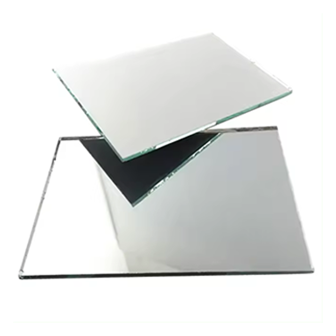Dec . 05, 2024 12:27 Back to list
Exploring the Benefits of Laminated Translucent Glass in Modern Architecture and Design
The Allure and Applications of Laminated Translucent Glass
Laminated translucent glass is an innovative architectural and design material that continues to gain popularity across various sectors, such as construction, interior design, and art installations. This type of glass combines aesthetic appeal with practicality, providing a unique solution for spaces that require both natural light and privacy. In this article, we will explore the properties, benefits, applications, and future potential of laminated translucent glass.
What is Laminated Translucent Glass?
Laminated translucent glass is created by sandwiching a layer of interlayer material, often made from polyvinyl butyral (PVB), between two or more sheets of glass. This interlayer not only enhances the glass's strength and safety but also allows for varying degrees of light transmission and diffusion, resulting in a soft, glowing effect. The translucency of the glass provides an unobtrusive view while significantly reducing glare—making it an ideal choice for a variety of settings.
Properties and Benefits
One of the standout properties of laminated translucent glass is its ability to block harmful UV rays while still allowing natural light to penetrate the space. This feature helps in protecting interiors, such as furniture, decor, and flooring, from UV damage and fading. Additionally, laminated glass offers sound insulation benefits, providing an extra layer of noise reduction that can be crucial in urban environments.
The safety aspect cannot be understated. If broken, laminated glass holds together due to the interlayer, minimizing the risk of injury from sharp shards. This makes it an ideal choice for high-traffic areas and residential applications. Furthermore, the interlayer can be customized with various textures and colors, providing design flexibility for architects and designers.
Applications in Architecture and Design
Laminated translucent glass has a wide range of applications, from residential to commercial projects. In homes, it is increasingly used for partitions, shower enclosures, and as decorative elements in living spaces. Its ability to diffuse light makes it suitable for spaces that require a balance of brightness and privacy, such as home offices and bedrooms.
laminated translucent glass

In commercial settings, this glass can be employed in conference rooms, storefronts, and facades, allowing businesses to create bright and inviting environments while maintaining privacy. For instance, a bank might use it in their conference rooms to foster an open atmosphere without compromising confidentiality.
Additionally, it is a popular choice for creative installations in galleries and museums. Artists often utilize laminated translucent glass to create immersive environments that alter perceptions of light and space. The aesthetic versatility of this material allows for innovative and engaging displays that capture the attention of viewers.
Environmental Considerations
In today’s environmentally conscious world, laminated translucent glass can be seen as a sustainable building material. Many manufacturers are producing glass using eco-friendly practices, and the energy efficiency of such glass is noteworthy. By allowing natural light in, buildings can reduce their reliance on artificial lighting, thus lowering energy consumption. Moreover, as the construction industry moves towards greener solutions, the demand for materials that contribute to sustainability will undoubtedly grow.
The Future of Laminated Translucent Glass
Looking ahead, the future of laminated translucent glass appears promising. Advances in technology may lead to further improvements in the manufacturing process, enhancing its performance characteristics, such as thermal insulation and self-cleaning properties. The integration of smart technologies, such as switchable glass that can change from translucent to transparent, holds potential for even more versatile applications.
Furthermore, as urban areas continue to evolve and the demand for innovative design solutions grows, laminated translucent glass is poised to emerge as a preferred choice. From creating harmonious living spaces to transforming commercial environments, its importance in architectural design will likely increase.
Conclusion
In conclusion, laminated translucent glass stands out as a multifaceted material that bridges aesthetics and functionality. Its unique properties offer various benefits that cater to the needs of modern architecture and design. As sustainability and innovation take center stage, this material will continue to shape the future of space design, bringing light, beauty, and safety into our environments. Whether in residential homes, commercial establishments, or artistic galleries, laminated translucent glass is a testament to the potential of architectural materials in enhancing our spaces while meeting the demands of contemporary living.
-
Safety and Style with Premium Laminated Glass Solutions
NewsJun.24,2025
-
Reinvents Security with Premium Wired Glass
NewsJun.24,2025
-
Premium Float Glass Line for Modern Architecture
NewsJun.24,2025
-
Low Emissivity Glass for Energy-Efficient Architecture
NewsJun.24,2025
-
High-Performance Insulated Glass Solutions for Modern Architecture
NewsJun.24,2025
-
Elevates Interior Style with Premium Silver Mirror
NewsJun.24,2025
Related PRODUCTS














